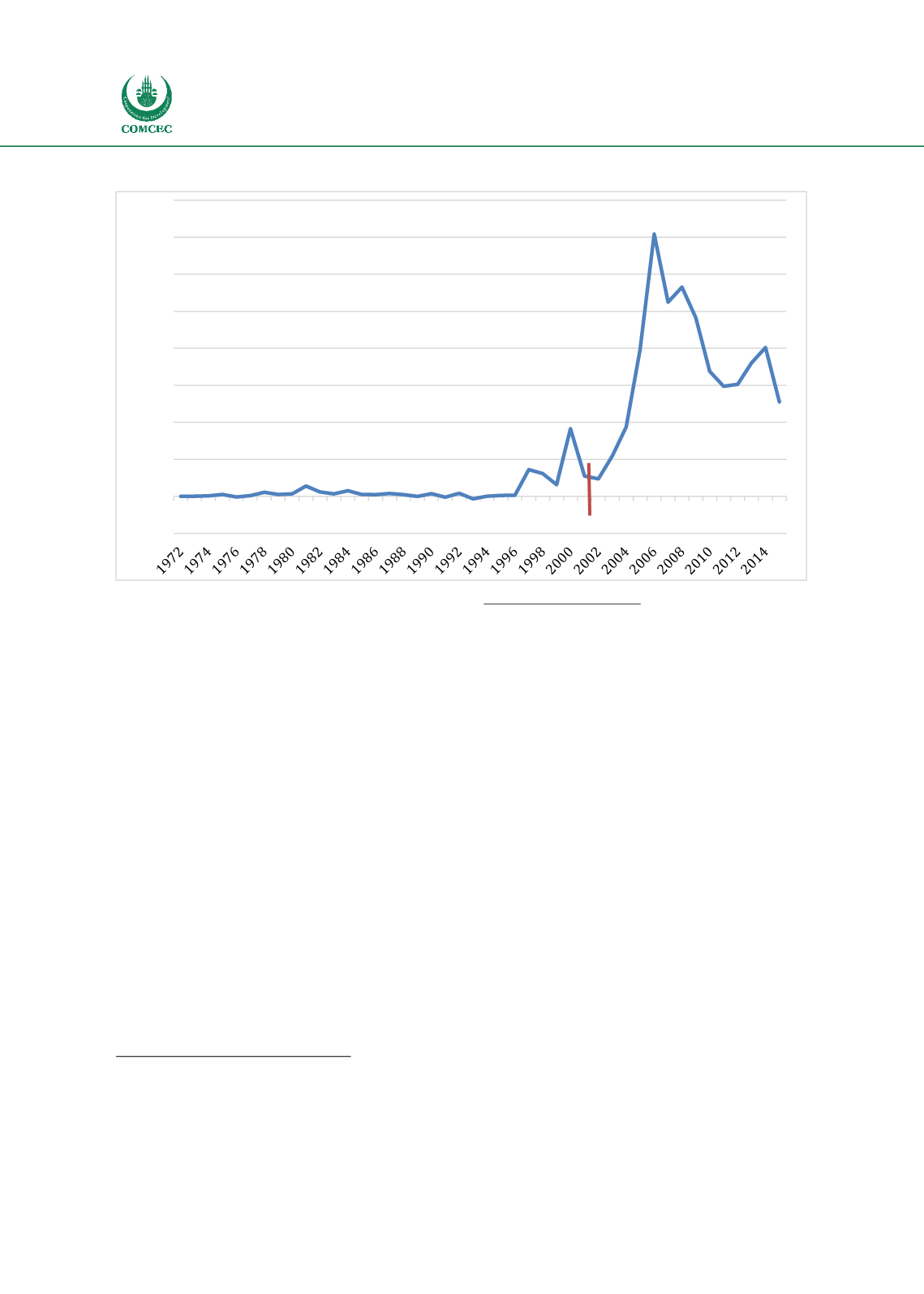

Special Economic Zones in the OIC Region:
Learning from Experience
138
Figure 35 - Jordan FDI – Net FDI Inflows ($Bn)
Source: World Bank (2017) World Bank Open Data. Available from
: https://data.worldbank.org/Looking at the Jordanian economy more broadly it can be seen that there have been significant
increases in GDP per capita, export values and FDI inflows following the opening of the Aqaba
SEZ. Analysis indicates that export values increased 179% in the six years following the opening
of the Aqaba SEZ whilst FDI in-flows increased by approximately 1,087%.
111
At the regional level it was recorded that the Aqaba Governorate GDP increased by 13%
following the creation of the Aqaba SEZ, an increase of almost three points above the underlying
trend prior to its creation.
112
The creation of the zone was recorded to generated an additional
180 million (JD) in additional output for the domestic economy by 2005 with employment
growth of approximately 10,000 jobs. The largest contributors to this growth are identified as
manufacturing and transport and communication sectors.
111
Whilst this analysis has attempted to demonstrate the economic effects of the Aqaba SEZ on the domestic economy it should
be caveated that there may be a number of economic reasons for the performance of the indicators analyzed. A more detailed
econometric analysis would be required to isolate the exact impact of the Aqaba SEZ on the indicators analysed.
112
Rockler, N (2006) The Impact of Aqaba Special Economic Zone on the Jordanian Economy.
-0.50
0.00
0.50
1.00
1.50
2.00
2.50
3.00
3.50
4.00
Aqaba SEZ
















